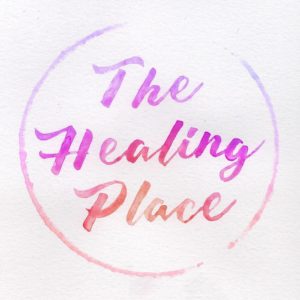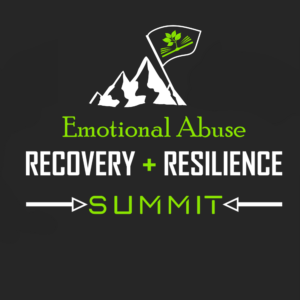Tag: resilience
What is PTSD?
What is PTSD?
What is PTSD? Or, in my case, what is C-PTSD?
Post-traumatic stress disorder (or PTSD) is defined by the American Psychiatric Association as: “a psychiatric disorder that can occur in people who have experienced or witnessed a traumatic event such as a natural disaster, a serious accident, a terrorist act, war/combat, rape or other violent personal assault.”
Medical News Today explains: “PTSD is generally related to a single event, while complex PTSD is related to a series of events, or one prolonged event.”Health Direct defines it as: “Complex PTSD describes a more severe and long-term condition that can occur after prolonged and repeated trauma, particularly in childhood. Trauma can cause problems with memory and disrupt the development of a person’s identity and their ability to control emotions and form relationships with others.”
For over twenty-five years, I battled severe panic attacks. These initially appeared when driving, brought on by a benign and unknown trigger. Flashbacks started haunting me and soon I was waking from my sleep in the throes of full-blown panic. I started to close in on myself and became agoraphobic over a period of time, afraid to leave my house for “fear of my fear”.
When I started EMDR therapy at Cincinnati Trauma Connection in 2013, it was there I first learned of dissociation and my having compartmentalized my trauma incidents in order to survive and cope. It was also within the safe confines of my therapist’s office where I started to sift through those old storage boxes of horrors and confront the negative energy attached to them. Trauma by trauma, memory by memory, I took my power back from the ghosts who had been haunting my mind and soul. I released long-stored trauma energy and learned coping skills to regulate my symptoms when triggered.
Some of the symptoms of PTSD which I experienced were:
- Hyper-arousal – I was living in a constant state of being on high-alert for imminent danger (whether real or imagined). That “tiger in the bushes” feeling was my norm. I still occasionally find myself in defense mode, however, I am now cognizant of it (my shoulders will be pulled up by my ears and my eyes will be scanning my surroundings) and can bring myself back into a centered, grounded, and calm state rather quickly.
- Panic attacks – These symptoms would arise at benign triggers (a loud noise, seeing a violent movie scene, being stuck in traffic, during restless sleep, and more): sweating palms, racing heart, tunnel vision, tingles in my legs and head, inability to formulate words, overwhelming need to escape/run or hide/curl into a ball, and feeling faint. It has been years since I have experienced a full-blown panic attack. If I feel the beginnings of one start to emerge, I am able to quickly disarm it with an onslaught of coping skills, mindfulness exercises, and grounding practices. Download my FREE anxiety coping guide above for more detailed info.
- Flashbacks – These first appeared soon after the second bank robbery and murder of my co-worker, when I awoke from a deep sleep to the terror of having the dark shadow of the murderer standing over me in my bedroom. While he was not really there, thankfully, my mind and body were reacting as if he was there with an intention to hurt me. The adrenaline coursed my veins as I fought my way back to reality. These flashback occurrences have diminished over the years and are now non-existent.
- Nightmares – Similar to flashbacks, except the haunting happens within the dream itself, but ends upon waking. I have been known to howl in my sleep, run and kick (having even received a restless leg syndrome diagnosis at one point), and, on rare occasion, flail in my sleep. Most times I woke up in the midst of a severe panic attack and would fall immediately to the floor and curl into a ball or dart from my bed and begin to pace and shake. Again, it has been years since I have experienced this and only once have I awoken from a frightening dream state during that time and was able to calm my aroused state within seconds.
- Avoidance behaviors – This entails avoiding situations and places which have caused a panic attack or anxiety in the past, or trying to avoid feeling scared, resulting in avoidance behaviors. Honestly, this one still lingers. Even after four years of EMDR therapy and utilizing other various therapy modalities and coping skills, I cannot yet drive on highways or over most bridges, sometimes experiencing heightened anxiety while a passenger in a vehicle in these spaces, as well. We have been unable to pinpoint the reason driving is a trigger. I have attempted exposure therapy and “making myself” drive over bridges and on small highway jaunts, however, the success is short-lived and avoidance behaviors quickly fall back into place. I will never give up and strive to find a solution to this lingering effect of my C-PTSD.
- Trust issues – This can be directed at intimate relationships (partners, friends, family members) or the general public (open spaces, crowds, someone sitting behind you). Because of the violation of personal safety experienced during traumatic events, trauma survivors will, at times, put up walls of defense as a protective measure. Because the large majority of my transgressors were male, I had to make concerted efforts to be aware of my responses to men in general. I also found myself having to sit at the end of an aisle while attending concerts or theater events so as to not be trapped and unable to escape quickly. I now honor my needs and trauma-history and plan accordingly.
- Anxiety – Here I am referring to a general state of anxious feelings. I would spend my days nervous about how I was coming across to someone, if so-and-so liked me, whether I was being a good enough mom, how I was going to travel across town for my son’s baseball game, was I going to randomly fall off of the earth (for real!), when my next panic attack was going to hit, how to keep all of the kids toys organized and not chaotic (you see a pattern here? . . . afraid to feel out of control). I now live my life in a regularly calm state, practicing mindfulness, and living in “the now” as much as possible. I am aware of my body/mind/soul state and take steps to center myself if I am feeling off-kilter.
- Racing thoughts – The scariest of all of my symptoms. I wasn’t sure how to even describe what was happening in my brain when I first tried explaining this to my EMDR therapist. I felt as if I was standing on the brink of insanity, one stumble away from going over the edge into madness. My brain was trying to grab at hope. That’s the best way I can describe it. Once I learned to be comfortable in my own body, with all of its quirks and sometimes interfering symptoms, I was able to stop a racing thought dead in its tracks. I was standing in the shower a few months ago when I was quickly overwhelmed by racing thoughts, and, just as quickly, I re-directed my thought pattern through mindfulness techniques and calming strategies and ended up smiling and saying aloud to myself, “You rock, T! I am so proud of you!”
Defining Resilience Series: Step 4 – Take Action Steps to Create Positive Change
Before diving into step 4, a reminder about resilience: it is defined as the ability to overcome adverse conditions; with healthy bonding relationships, guidance, support, and compassion as the catalysts. Basically, it entails having the capacity to bounce back from stressful or overwhelming experiences.
What are some steps we can take to ensure we are building resilience in our lives?
- Focus on the positives.
- Seek out and nurture supportive relationships.
- Utilize self-care strategies.
- Take action steps to create positive change.
- Work on healthy habit formation.
- Find a guiding hand to hold.
- Learn to become our own hero.
- Be gentle with ourselves.
Today we will cover Step 4: Take action steps to create positive change.
In order to overcome the panic attack and anxiety symptoms I had been experiencing for over twenty-five years, I had to make some serious changes in my mindset. I also had to be willing to change my habits, instill healthy boundaries, build my support system, and welcome challenges. These days I pat myself on the back for investing time and energy into ME and creating a life filled with tranquility even in the midst of storms.
Here are ten action steps you can implement in your life in order to create positive change:
- Be honest with yourself: Take a good look at your life in order to determine where you really want to make some positive changes. Make a pros and cons list, journal it out, or talk it over with a friend. Do you want a more spiritual existence? Then what can you do to change that? Do you want to feel more fit and healthy? What are some realistic options to make that happen? And so on. Being real with what you want will give you a clear goal.
- Welcome challenges as opportunities for growth: If you approach your action steps with a “bring it” attitude, you will take the negative power out of any challenges which might arise. Remind yourself that you might stumble. And that’s okay. Look at mistakes or setbacks as opportunities for growth. I recently visited the gulf coast in Florida and allowed my fears to overwhelm me on a beach visit. I closed in on myself and held a pity party. However, within a few hours, I gave myself a pep talk and headed back out to the shore. I conquered my phobias and enjoyed a moment in the “now” as I played with my family in the surf.
- Small steps add up: You do not have to accomplish your goal all at once or have it completed in day one. If you are wanting to be more active, turn off your television or phone or video games for an hour. Then go move. Walk in the park, hop on your bike, turn on music and dance around your kitchen while you cook. No need to toss the television out the window . . . yet! Start making new habits one little step at a time. What will your first small step be?
- Treat others as you would like to be treated: That whole golden rule thing. It really does help bring positivity into your life. Try smiling at others and take note of their responses. Sure, you might run into a few folks who are having a bad day (or life) and ignore your gesture, but that’s cool. Send them a little private wish for positivity in their lives then move on to the next person for a smile exchange. Try doing favors for others without expecting a favor in return. Maybe join a volunteer organization to give back to your community. As you nurture kindness, that will radiate into all aspects of your life. Keep track of how many people returned your smile today . . . you might be surprised!
- Remove/reduce negativity: I really could live without a television. I rarely have it on. And, wow, is my life more fulfilling now that I keep it from infiltrating my peaceful space. I also listen to meditative music. I avoid violent, disrespectful, and negative song lyrics. I have put limitations in place regarding toxic people in my life . . . those energy vampires I have mentioned before. I do not remove them completely as I hope maybe some day my glitter-shitter attitude will rub off on them, but I do walk away if I start to feel overwhelmed by their negativity. It’s a gift I give myself. Is there anyone in your life needing a boundary adjustment so as to minimize their pull on your positive energy?
- Practice self-care: A powerful tool for creating positive changes in your life is self-care. Using positive affirmations, utilizing healthy eating choices, engaging in activities that promote laughter and smiling, allowing yourself permission to rest or do “no-thing”, and finding a hobby are all examples of self-care. Choose one self-care practice to start today!
- Eliminate unhealthy/unsafe choices: One of the best decisions I ever made for myself was quitting smoking. I breathe better, feel better, smell better, and live better. Recognizing my stress eating and carb addiction helped me make the choice to treat my body better, fueling it with healthier options. What unhealthy choices have you been wanting to eliminate? What’s stopping you from cutting it from your life?
- Build a supportive social network: Whether you join an online group, engage in a volunteer organization, or reach out to someone new, make sure you surround yourself with others who lift your spirits and promote positive actions. Avoid the gossip groups and bitch-session gatherings. It’s okay to vent now and then, just don’t dwell there. Do you have a circle of support? If not, envision it. Then take those small steps to make it happen.
- Challenge yourself: Believe in you! And show it by challenging yourself to accomplish something you have long wanted to do. Have you been wanting to go back to school and finish up a degree? Are you an artist looking for an audience . . . then create an online store or sign up for a craft show booth. Again, believe in you!
- Dive deep: It can be scary going back into the dark spaces of your heart and soul. At the same time, it can be liberating. If you need to hold a hand (friend, therapist, religious leader, or coach), by all means, do so. You will find you are so much stronger than you may have thought possible. I certainly believe in you. By diving deep and revisiting those dark spaces, you will empower yourself with each triumph of merely returning to peek in. My hope for you, for all of us, is that we will eventually be able to shine our light so brightly, there is no more darkness.
The Healing Place Podcast Interview: Stacy Brookman – Resilience & Life Storytelling Expert
During a recent episode of The Healing Place podcast, I sat down with ACES Connection member, Stacy Brookman, host of the Real Life Resilience Podcast, to discuss her role as a resilience and life storytelling expert, finding clarity, her upcoming Emotional Abuse Recovery and Resilience Summit (of which I am one of forty-five featured speakers . . . yay!), and more.
Follow the links below to learn more about Stacy, life storytelling, to register for free for the 12-day summit starting September 1st, and the FREE guide listing the 35 most impactful books for emotional abuse.
Life Story Laboratory – Summit Registration
FREE Guide – 35 Most Impactful Books for Emotional Abuse

Listen in on iTunes, Blubrry, or directly from my website as Stacy discusses her important work in the field of resilience.
Peace,
Teri Wellbrock
* I am excited to have more therapists, trauma-gurus, and ACES experts lined up over the next few weeks for podcast interviews. I would love to have YOU join me, as well. If you are interested, please send me a private messages through this site and I will send you my podcast interview questions for you to review.
I am a huge fan of lifting one another up as beacons of light for those who are struggling, looking for guidance, or lost in the dark. I would love to offer my podcast as a platform for your voice about your mission and passion. My goal is to provide motivational, inspirational, and healing stories for my listeners.
Defining Resilience: Step 2 – Seek Out and Nurture Supportive Relationships
 A sneak peak at a portion of my upcoming Hope for Healing newsletter scheduled for delivery August 1st. Subscribe at Hope for Healing newsletter or on my website at www.teriwellbrock.com. Thanks!
A sneak peak at a portion of my upcoming Hope for Healing newsletter scheduled for delivery August 1st. Subscribe at Hope for Healing newsletter or on my website at www.teriwellbrock.com. Thanks!Defining Resilience
Step 2: Seek Out and Nurture Supportive Relationships
Before diving into step 2, a reminder about resilience: it is defined as the ability to overcome adverse conditions; with healthy bonding relationships, guidance, support, and compassion as the catalysts. Basically, it entails having the capacity to bounce back from stressful or overwhelming experiences.
What are some steps we can take to ensure we are building resilience in our lives?
- Focus on the positives.
- Seek out and nurture supportive relationships.
- Utilize self-care strategies.
- Take action steps to create positive change.
- Work on healthy habit formation.
- Find a guiding hand to hold.
- Learn to become our own hero.
- Be gentle with ourselves.
Today we will cover Step 2: Seek out and nurture supportive relationships.
The day my therapist said to me, in reference to my then-BFF, “Teri, you need to put some healthy boundaries in place,” I just stared at her befuddled. I truly had no idea what a “healthy boundary” looked like. Growing up in a co-dependent relationship with my alcoholic mother, I had spent my youth playing the part of the peace-keeper and “good girl” in order to create some sense of calm within the chaos. My sister and I have discussed, on many occasions, the impact physical abuse and emotional abandonment had on our future relationships. We agreed we had no concept how to even go about putting healthy boundaries in place and why that was critical for establishing and maintaining healthy relationships, friendships, and partnerships.
Here are five “healthy boundary” suggestions followed by five relationship-nurturing ideas to incorporate into your own life:
- You are allowed to say “no”: Practice doing it. It may be difficult, at first, but you will soon reap the benefits of more time, less resentment, and empowerment within your own life and decisions. If you do not want to do something, then don’t do it. And if someone is upset by that then you know that relationship needs some boundary work!
- Expand your circle: One of the first indications that I was in an unhealthy friendship with poor boundaries was when I was criticized by that friend for becoming more involved in my daughter’s school activities and developing new friendships. Broadening my circle and developing a tribe of supportive souls not only shined a light on the unhealthy patterns, but helped me create new healthier habits within those friendships.
- Notice any unhealthy habits: I had a tendency to latch on with a death-grip, almost to the point of obsession, to those who loved me even after knowing all of my deep, dark secrets. I had such a deep-seated fear of abandonment that I would spend more time trying to keep the peace and play along, even when I disagreed with something, that I lost myself in the process. Once I started to become aware of my unhealthy habits, I was able to re-direct myself toward healthy boundaries.
- Be honest: I kept quiet for far too many years because I was afraid that speaking up would result in being left. Once I realized that I was entitled to have not only my opinion but a voice to speak it, and that the reactions of others, whether they sent me packing or not, had nothing to do with me and everything to do with where they were on their own journey, I found solace. There is a release that happens in accepting “abandonment”. Knowing others might walk away when you put healthy boundaries in place is an indication that they still have work to do in their own lives. However, many will stick with you as you learn to speak your truth, and even more will gravitate toward you.
- Know your worth: Knowing your worth on every level and protecting it are critical to maintaining supportive and healthy relationships. Your healthy boundaries include physical (no one should touch you in a harmful way), emotional (being ridiculed is unacceptable behavior from others), spiritual (you are most assuredly entitled to your beliefs), cognitive (mind-games can be a controlling aspect in particular relationships, especially those involving narcissists). Be sure to utilize positive affirmations and practice them daily (“I am worthy”, “I am kind”, “I am lovable”, etc.).
- Join groups that spark your passion or pique your interest – such as volunteering at an animal shelter, a rock-climbing club, your church choir, a car enthusiasts group, a small business association, etc.
- Reach out to those who allow you your boundaries – notice new people who come across your path and respect those boundaries.
- Engage in support groups (in person or online) – such as Al-Anon, parenting groups through mental health agencies, faith courses offered through churches, etc.
- Write thank you notes, texts or emails to those who offer supportive roles in your life – offering gratitude for the positive support not only keeps it in perspective for you, but helps others realize the impact they are having in the lives of others.
- Offer your support to others – by reaching out a helping hand you can start to develop reciprocal relationships in which you help one another when needed.
Defining Resilience: Step 1 – Focus on the Positives
 A sneak peak at a portion of my upcoming Hope for Healing newsletter scheduled for delivery July 1st. Subscribe at Hope for Healing newsletter or on my website at www.teriwellbrock.com. Thanks!
A sneak peak at a portion of my upcoming Hope for Healing newsletter scheduled for delivery July 1st. Subscribe at Hope for Healing newsletter or on my website at www.teriwellbrock.com. Thanks!Before diving into step 1, a reminder about resilience: it is defined as the ability to overcome adverse conditions; with healthy bonding relationships, guidance, support, and compassion as the catalysts. Basically, it entails having the capacity to bounce back from stressful or overwhelming experiences.
What are some steps we can take to ensure we are building resilience in our lives?
- Focus on the positives.
- Seek out and nurture supportive relationships.
- Utilize self-care strategies.
- Take action steps to create positive change.
- Work on healthy habit formation.
- Find a guiding hand to hold.
- Learn to become our own hero.
- Be gentle with ourselves.
Today we will cover Step 1: Focus on the positives.
I love when my memories pop up on Facebook. I can glance back at my life over the past nine years, since joining that social media platform, and re-live the joys. Sure there is an occasional post where I set a gripe free, but it’s mostly happy-sunshine stuff.
However, it has not always been that way. This glitter-shitter stuff took a lot of effort. I had to completely revamp my habits in some areas. Here are eight suggestions to incorporate into your own life:
- Surround yourself with positive energy: I made a concerted effort to remove toxic people from my life, or at least, how much exposure I had to their toxicity. Those energy vampires are draining. Emotionally, spiritually, even physically.
- Create positive affirmations: I made mine using a Word doc, incorporating heart shapes into the doc, then filling the heart with nature photos I’ve snapped. Here is one of many I’ve created:

- Practice mindfulness: This is a way to be present with all of your blessings in the present moment. Let your past worries go. Do not focus on future “what ifs”. Just be here. In this moment. With everything peaceful in the moment. I like to practice mine in nature settings as I find tranquility in that space.
- Re-direct your negative thoughts: I will purposefully stop myself mid-thought and say, “Nope. Let’s think about this in a positive way, T.” Example: my eighty-two year old mom was taking F.O.R.E.V.E.R. strolling through the grocery store. My own to-do list was nagging at me and I found myself becoming impatient with her. I stopped myself right there in the condiments aisle and just looked at her little hand reaching for the hot sauce. I smiled in the moment, knowing I am blessed to still have her with me.
- Smile: It sounds simple enough. But, seriously. It requires effort sometimes. I try to remind myself to connect with others through a smile. It truly is amazing how people respond. Sometimes they actually look surprised to see someone smiling at them! But, almost always, they smile back.
- Look for the light in the darkness: This can seem an impossible task. Especially if you are hurting or struggling. But, I promise, you will help yourself recover your footing if you find that light, that thing, whatever it is in your dark moment. Focus on it, treasure it, remind yourself of it as often as needed. Purposefully seek out a positive force, solution, or beacon.
- Share the positivity: Put your happiness out into the world. I keep a happy thoughts journal. I also share my joys on social media. I write about things that make my heart happy. I try to offer positive solutions to others. Through radiating joy, I bring more joy into my life.
- Give of yourself: I ran into a teacher I used to work with while pumping gas earlier today. She made my heart smile when she said, “It’s not been the same since you left. We miss you. The kids really need you.” She was talking about the job I had as a mental health specialist working in various school settings. Helping those kiddos, offering them coping skills and a chance to talk about their struggles, sharing my positive energy, helped bring positivity into my life. I knew I was making a difference in their lives. I still do this though our therapy dog services, meeting with kids to discuss anxiety and the important role of therapy animals in healing.








